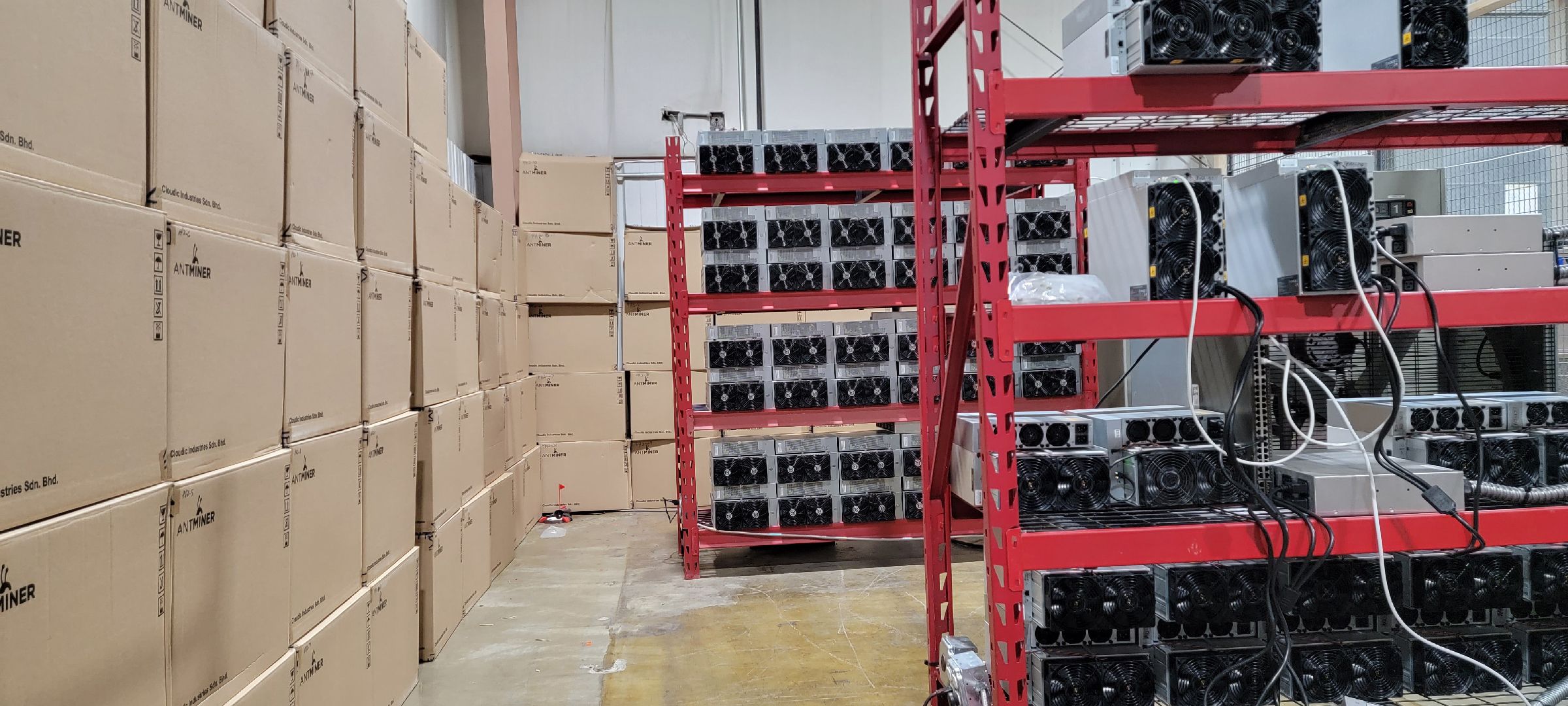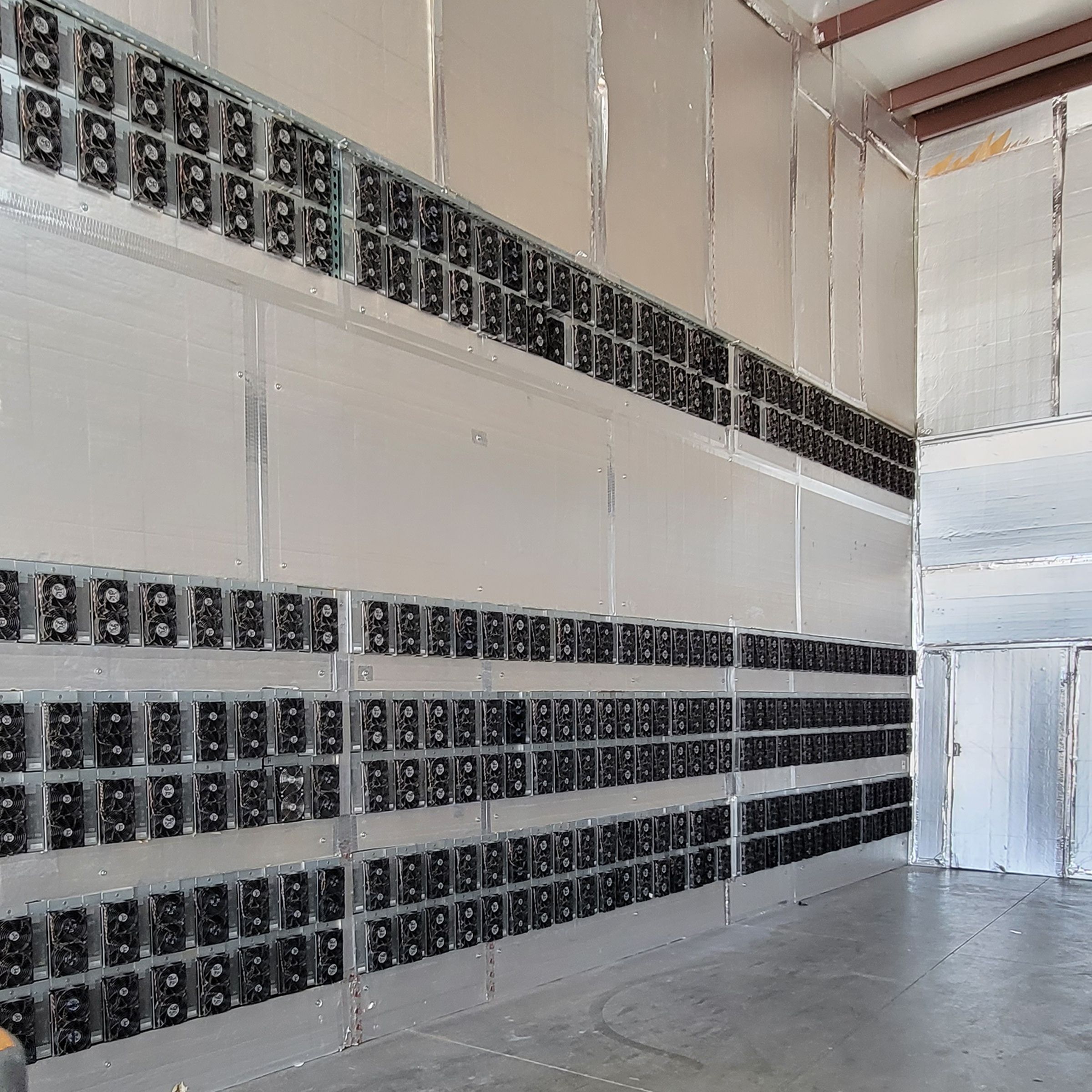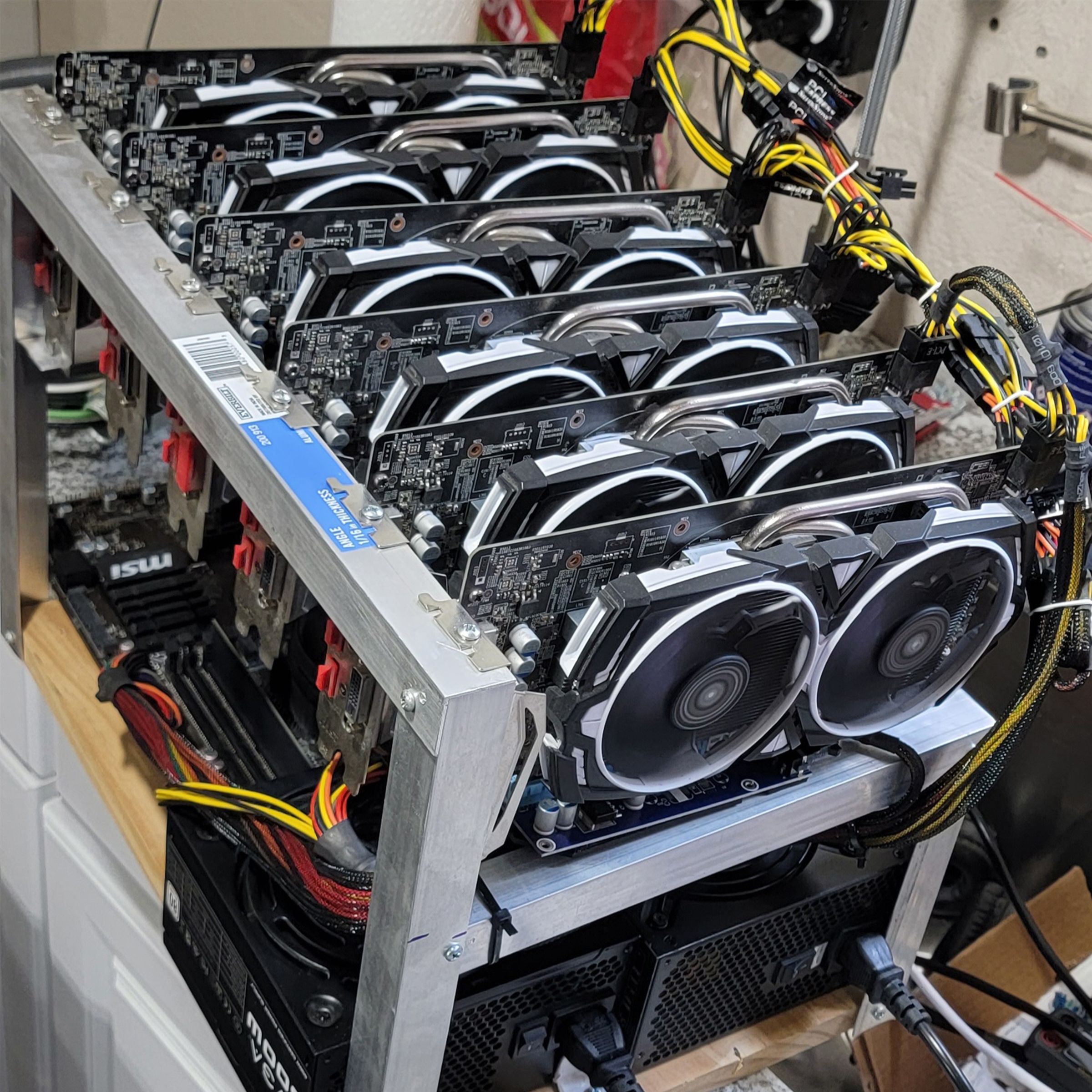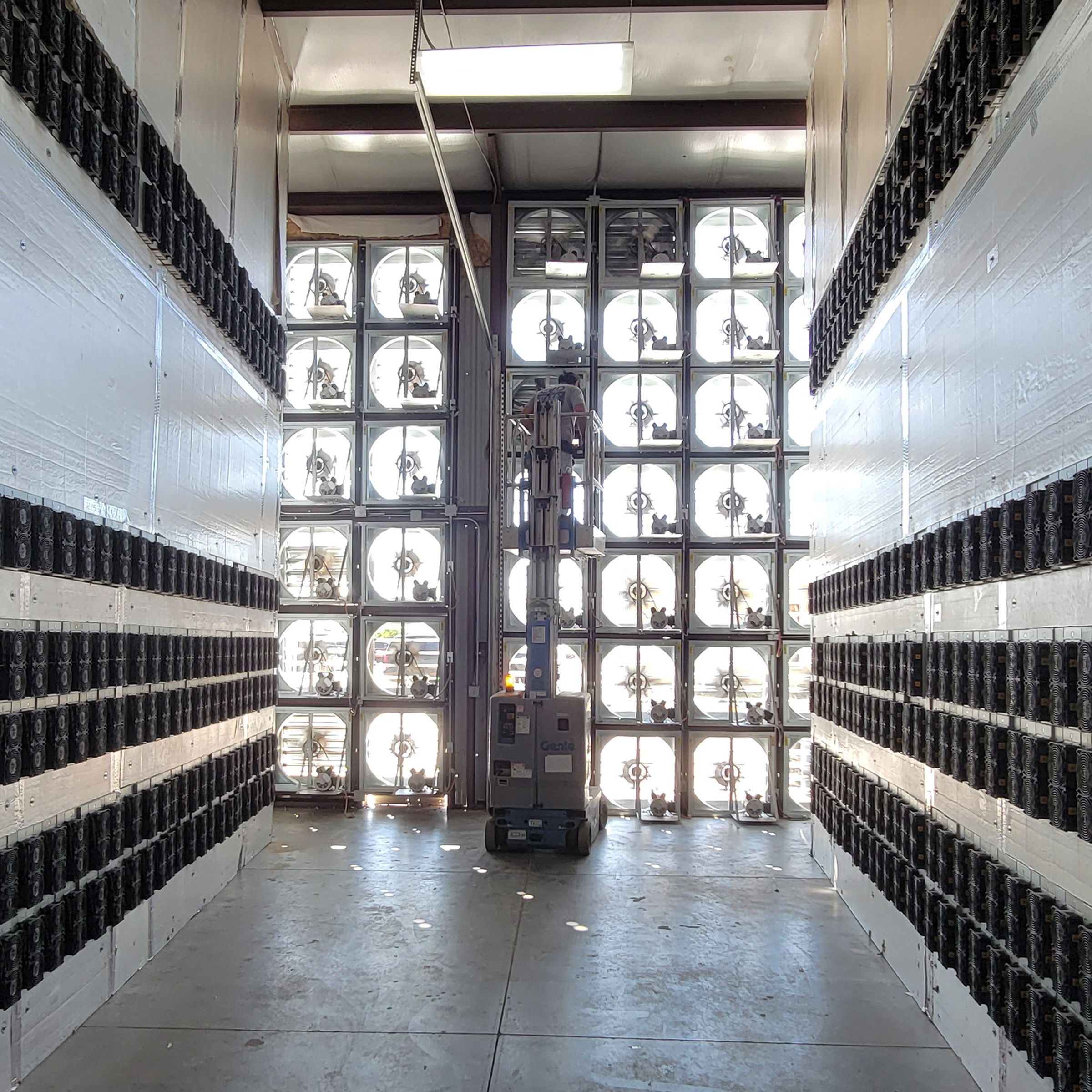Introduction

“Start now!” says Kendall Staggs, the owner and operator of Peake Holdings, LLC, when asked when the best time would be to enter the world of cryptocurrency mining.
Running his self-described “medium size” crypto mining operation from locations in southern Ohio and northern Kentucky is a profitable venture, he says, and the former electric utility company employee sees a future where investing in crypto mining could show returns on investments of 10 to 20 percent or more for years to come.
If you do it right.
Staggs first began crypto mining on a small scale in his home in 2019 and grew his operation significantly, in stages, during the past three years. He shared some of his insights and recommendations about entering the world of cryptocurrency mining during a recent interview.
Types of Crypto Mining

There are different types of mining at different levels.
- Graphic Card Mining: For the beginner, there’s graphic card mining, which can be done at home with a minimal investment in graphics cards or other equipment which is often set up in a back bedroom or garage.
- FPGA Mining: There is FPGA, or Field-programmable Gate Array mining, which is a mid-level setup, frequently constructed in 5,000 square foot warehouses which consume between three and seven megawatts of power.
- ASIC Mining: The third, largest, and most resource-hungry form of mining, is ASIC mining – Application Specific Integrated Circuits – which most often run out of containers or shipping containers configured to consume anywhere from seven or eight, all the way up to hundreds of megawatts.
“In layman’s terms, ASIC mining is simply special built computers to run hash functions,” says Staggs. “A typical unit is about 18 inches by 12 inches by 10 inches, and uses around 3,100 watts of consistent power, which would be similar to running a household electric clothes dryer.” Staggs explains that operating his 113 100-terahash ASIC units at Peake Holdings is like running 113 electric dryers 24/7/365 – only profitably.
Is this Really a Mining Operation or a Power Business?
Some people say crypto mining is more of a power business because of its heavy demand for a continuous electricity supply.
Staggs agrees that having an understanding of the utility business can be helpful. Crypto mining is power intensive, that can have its advantages when negotiating rates with a utility company — because the more you use, the better the rate you’re likely to get per kilowatt hour.
“And one thing about any kind of crypto mining, which is often lost in translation, is that it’s an overall good thing for power companies because it creates a 24-hour demand. The utilities don’t have to operate at a loss all night when most people aren’t using much electricity,” he says. “Anytime that you can fill out their capacity, a power company is going to give you a favorable rate because it makes their life easier.”
So, the first thing crypto miners look for is the local power rate, and if the rate will decrease as an operation grows larger.
“If you come up with an unfavorable power rate, then that location just isn’t suitable at all,” Staggs says, “and you’ll need to find a different community for your farm.”
Then, he advises, if you’re looking to use from 10 to 50 or 100 or more megawatts per hour, you’d better make sure that the utility company can flow that much energy across the power lines themselves. “You want to be close to a substation or even own the substation yourself because if anything, you’re less likely to have disruptions,” Staggs says.
Solving the Cooling Challenge

Crypto mining equipment runs hot, and cooling is a major reason that utility expenses can run high. That’s why some of the world’s largest crypto mining operations are located in countries with temperate summers and cold winters.
“The hotter it is, the harder it is to run these units,” says Staggs. “When you see temperatures above 92 to 93 degrees Fahrenheit ambient, you’re going to have trouble running your miners. They’re going to start overheating and shutting down to make sure that they don’t fry any of their connections.”
But highly competitive utility rates and a supportive business community makes crypto mining possible in areas like Arizona that are home to blistering hot summers.
The options are air cooling and liquid cooling, and each has its advantages and disadvantages.
For Staggs, it’s air cooling in his buildings: “I use air cooling only and I use passive intake. There are no intake fans, only exhaust fans. All of my miners blow their heat into what we named the ‘hot box’ — a space about as big as a small bedroom in your house. And then an exhaust fan blows all that hot air out. A good mining farm will exhaust the entire hot box every four to six seconds.”
Although he doesn’t foresee getting into liquid cooling because of the expense — which could run as high as 50 percent of the actual mining equipment — he sees the benefits in some circumstances. “Once you commit to liquid cooling, you have that infrastructure forever,” Staggs says. “And so, it could be a good avenue for some operations in extremely hot environments. It’s easier to liquid cool than it is to air cool if you have a hot ambient temperature.”
What About Noise Control?
Staggs says that noise control isn’t an issue outside of his buildings, and that there are minimal noise issues inside where the miners are running. He and his team do wear hearing protection to defend against the sound of exhaust fans and the high-pitched whine of ASIC miners when they go inside.

Do's and Don'ts
Staggs encourages would-be crypto miners to get in the game. “Go buy some mining equipment and try it out,” he recommends. “You can do it at your house if you want to, but make sure that you crawl, walk, run. I personally think it’s never a bad time to get into mining.”
From his experience, he shares his list of Do’s and Don’ts as you begin a mining operation. Do:
- If possible, find a building that already has all of the electrical power infrastructure installed, which is a massive savings when you’re trying to build a large mining operation.
- Ensure that you have a good electric rate that is set for a period of time, which is long enough for you to make your return on initial investment.
- Join a community to help with problems along the way. You’re inevitably going to have errors in the mining equipment. There will be glitches. You’re going to have airflow issues, you’re going to have a number of problems, which you’ll most likely know nothing about. So, you will need someone to help you.
- Use mining equipment as a tax write off. A successful mining operation could face a large tax burden. This equipment can be written off and bonus depreciated over one year, or you can depreciate it over the expected life of the equipment, which can be up to five years.
His Don't include:
- Don’t sell all of your crypto as you mine. Hold some of it, but also have a plan to sell at least some of it every month when you get your payouts.
- Don’t purchase all of your equipment at once. If you’ve got $10,000 to invest, for example, don’t go and buy five ASICs right now. Buy one this month, buy one next month. Basically, dollar cost average into acquiring equipment because the cost can fluctuate equally to the Bitcoin price.
- Don’t mine at a loss. If you happen to face a hike in your insurance or in electric rates, just shut down your operation and try and figure out where you can move it. There’s no reason to mine at a loss. You might as well just buy the coin for what you would’ve paid in power.
- Don’t go into a significant amount of debt in order to create your operation, although Staggs believes that crypto mining could provide returns year over year for a very long time.
How To Do It Wrong
Based on observing others’ mistakes, Staggs muses about what he would do if he were going to start off on the wrong foot:
- “I’d take 80% of what my investment’s going to be and I’d buy the equipment today not knowing where I was going to set it up or anything about the property where I was going to put it,” he says. “Then, I would find out that the remaining 20 percent isn’t enough to build out the infrastructure.
- I’d set the equipment up in someplace where it’s too hot to afford to run your equipment continually, and you can only get about six months a year of run time — because you need 90 percent up time in order to make money.
- I’d overpay for the cost of acquiring equipment, which could delay the timetable for generating returns on the investment for months or even years.
- I’d get into this field without any background in computer technology or without tech support.
- And finally, I would negotiate a power rate with the utility company for only a six-month period of time and then find out that they’re going to jack their rate up to be twice of what it was for the initial six-month contract.”
After a long pause, he adds, “I think that’s about the worst you could do. This would be a good way to lose half your money right away.”
Know the Risks
He’s been there, so Staggs advises that you know what to expect on both the up and down sides of crypto mining. From varying utility rates to infrastructure to technology issues, there are a lot of variables in the equation.
“Your miners are never going to run perfectly,” Staggs says. “Some of them are going to run better than others. And the problem is that it’s such a new technology that if you get new units and they don’t run properly, a lot of times even the manufacturer isn’t sure what the problem is.”
So, understanding that you’ll be dealing with troubleshooting issues — and that some issues take time to solve — removes the element of surprise from the picture.
Enjoy the Adventure
Despite the risks, expenses and troubleshooting, Staggs says he’s having fun in the crypto mining universe. He likens crypto mining to owning digital property in cyberspace.
“The coolest thing that I’ve found with regards to crypto mining is the fact that it’s decentralized,” he says, “which means anyone with steady power, an internet connection and a couple thousand dollars can buy one of these units, plug it in at their house and make money 24 hours a day, 365 days a year.”
Today, he views his 113 100-terahash units as “employees who don’t gripe or complain,” and the industry as one that could show returns that are similar to the real estate industry, only with less risk.
“There’s few things that are better than making money while you sleep,” Staggs says.

Connect with Kendall
Staggs will be glad to respond to anyone who has questions or is seeking advice about launching and operating a cryptocurrency mining operation. You can reach him via email at [email protected].
c3controls: Here to Help
Cryptocurrency mining has been referred to by many as a power business because of the electrical infrastructure necessary to run mining equipment around the clock — in even the smallest operations. Crypto mining is, essentially, a highly energy intensive process that can take up to 1,449 kWh to mine a single bitcoin, according to the Digiconomist’ Bitcoin Energy Consumption Index. That’s nearly the same amount of power consumed by the average U.S. household in 50 days.
Efficiency in managing power is a key factor in crypto mining profitability. Products from c3controls are essential parts of the most economical power infrastructures of large, medium and small-sized cryptocurrency mining companies.
Call us at 724.775.7926 or visit c3controls.com to learn more or shop for circuit breakers, disconnect switches, pilot devices and other electrical control hardware when you’re looking to create the most efficient and durable crypto mining operation possible.
----------------------------------------
Disclaimer:
The content provided is intended solely for general information purposes and is provided with the understanding that the authors and publishers are not herein engaged in rendering engineering or other professional advice or services. The practice of engineering is driven by site-specific circumstances unique to each project. Consequently, any use of this information should be done only in consultation with a qualified and licensed professional who can take into account all relevant factors and desired outcomes. The information was posted with reasonable care and attention. However, it is possible that some information is incomplete, incorrect, or inapplicable to particular circumstances or conditions. We do not accept liability for direct or indirect losses resulting from using, relying or acting upon information in this article.
ISO 9001:2015
Certified
17+ Million Product
Configurations
Lifetime
Warranty
Guaranteed
Same-Day Shipping
Advantage Pricing
Save Up To 40%
c3controls Headquarters, USA
664 State Avenue
Beaver, PA 15009
